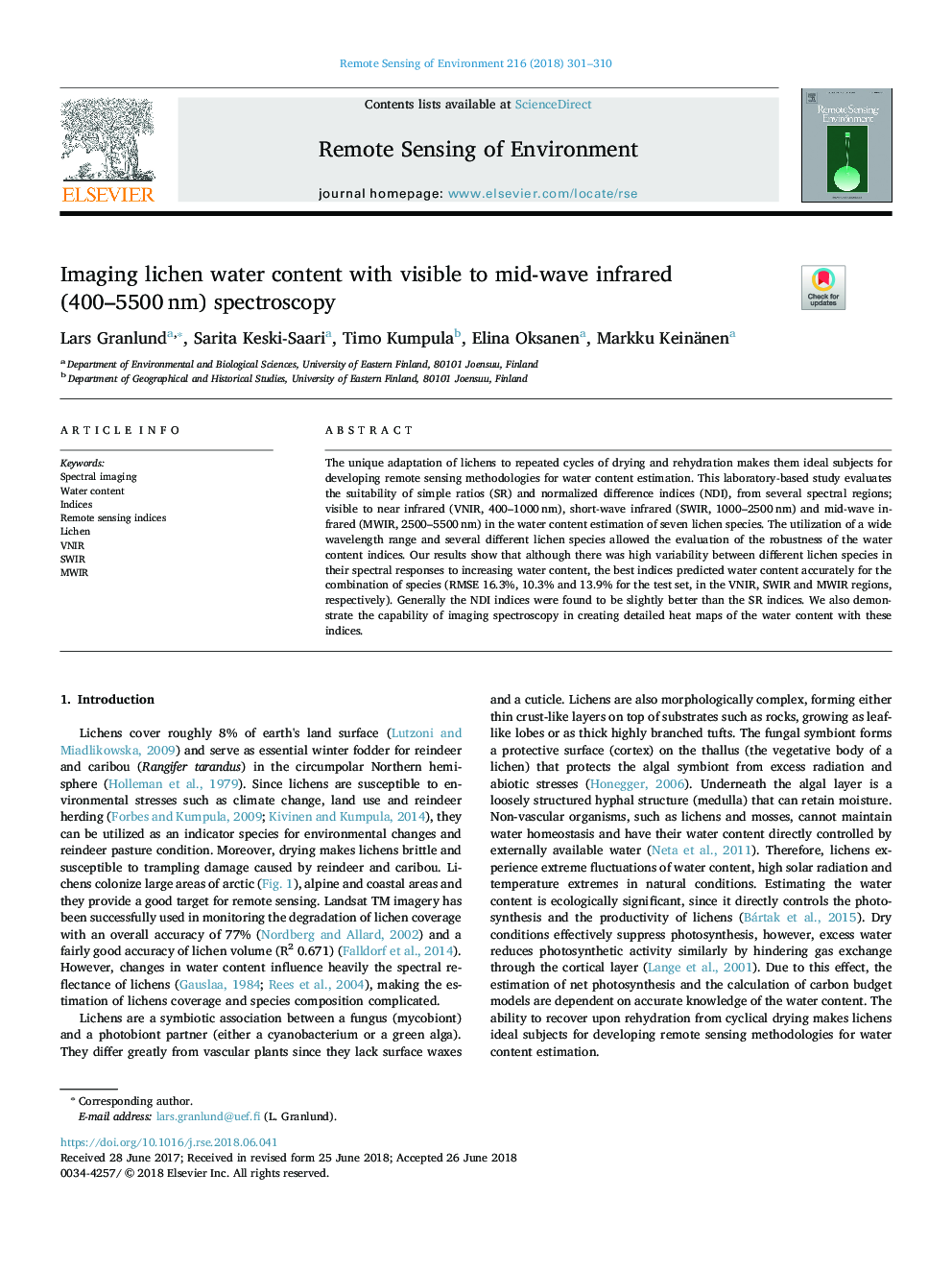| Article ID | Journal | Published Year | Pages | File Type |
|---|---|---|---|---|
| 8866418 | Remote Sensing of Environment | 2018 | 10 Pages |
Abstract
The unique adaptation of lichens to repeated cycles of drying and rehydration makes them ideal subjects for developing remote sensing methodologies for water content estimation. This laboratory-based study evaluates the suitability of simple ratios (SR) and normalized difference indices (NDI), from several spectral regions; visible to near infrared (VNIR, 400-1000â¯nm), short-wave infrared (SWIR, 1000-2500â¯nm) and mid-wave infrared (MWIR, 2500-5500â¯nm) in the water content estimation of seven lichen species. The utilization of a wide wavelength range and several different lichen species allowed the evaluation of the robustness of the water content indices. Our results show that although there was high variability between different lichen species in their spectral responses to increasing water content, the best indices predicted water content accurately for the combination of species (RMSE 16.3%, 10.3% and 13.9% for the test set, in the VNIR, SWIR and MWIR regions, respectively). Generally the NDI indices were found to be slightly better than the SR indices. We also demonstrate the capability of imaging spectroscopy in creating detailed heat maps of the water content with these indices.
Related Topics
Physical Sciences and Engineering
Earth and Planetary Sciences
Computers in Earth Sciences
Authors
Lars Granlund, Sarita Keski-Saari, Timo Kumpula, Elina Oksanen, Markku Keinänen,
